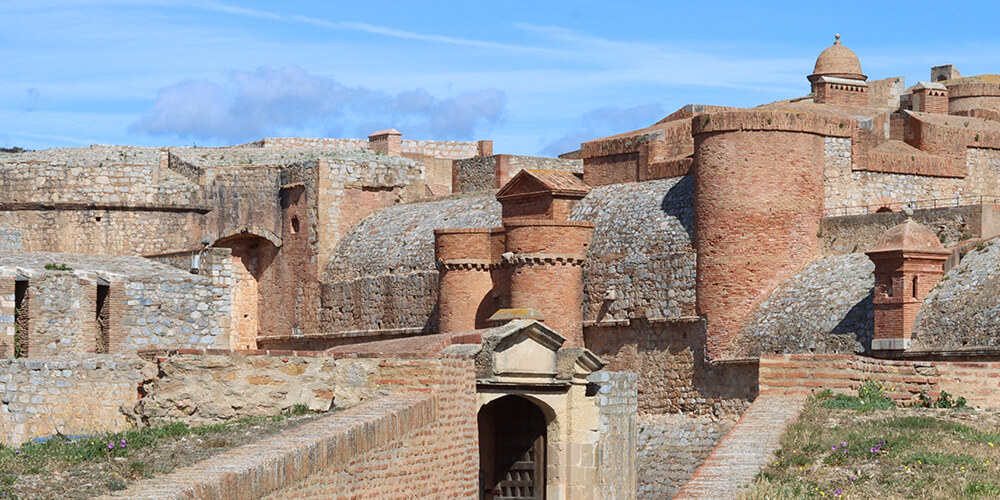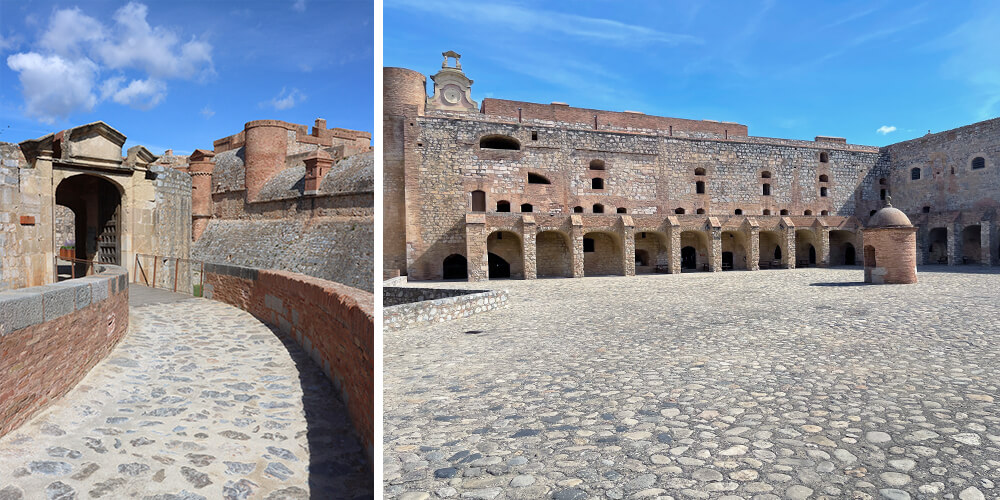
In the 15th century, the marriage of Ferdinand II of Aragon and Isabella of Castile united two kingdoms on the Iberian Peninsula. Also known as the Catholic Monarchs, their union created one of the largest empires of the Modern Era. Their dynasty included parts of Italy and France, reaching as far as the Corbières region. To protect the narrow passage between Spain and France, the Forteresse de Salses was built in the village of Salses-le-Château. Since then, the castle has changed hands- and countries- to ultimately become French in 1659.
Salses-le-Château
When driving the A9 highway to Spain, you can see the Forteresse de Salses on your left-hand side just before Perpignan. Built between 1497 and 1503 at the command of Ferdinand II of Aragon, it has now been at Salses-le-Château for several centuries. Looking at the fortress from the car, it flashes by in a second, and I always thought it was only a ruin. But you can actually take a tour of the Fortresse de Salses as it has stood the test of time perfectly. You can either visit the ground floor by yourself or explore some of the upper parts with a French-speaking guide. Both visits take about 45 minutes and cost from 8 euros per adult. Check the website to find out about special rates and combined tickets. Children under 18 years old can enter for free.

Revolutionary
The Fortress of Salses’ design was quite revolutionary at the time. It was a semi-buried mix between a medieval castle and a bastion fort with four artillery towers. Also, the architect made an ingenious sewer connection, so that water could be stored and used by the men when needed. No less than 1,500 soldiers could stay at the castle at the same time. However, the inside was a real labyrinth with numerous creep-through-sneak-through corridors. Spanish soldiers had to stay for a minimum of three years, as it took them six months just to get to know their way around the castle. And that’s why you can only visit the upper parts with a guide, to avoid losing visitors in unexpected passageways with different levels.

Whisper history
The whole complex measures an impressive 110 by 84 metres. Another novelty in the 15th century was that the fortress was built to resist the newest artillery. Like the metallic cannon balls which had replaced the stone ones. Six meter thick walls made the fort almost invincible. Almost, as before it was even completed, it was attacked by the French in 1503 for the first time. The second time took a bit longer- in the summer of 1639. After losing it to the Spanish again, the fortress finally remained in French hands in 1642. In 1659, Philip IV and Louis XIV signed the Treaty of the Pyrenees to end the Franco-Spanish war, making Roussillon French again. And so, the Forteresse de Salses became French too. Inside, you won’t see any furniture or decorations, though. It’s just the walls that whisper history, brought alive by the guide and your imagination.


